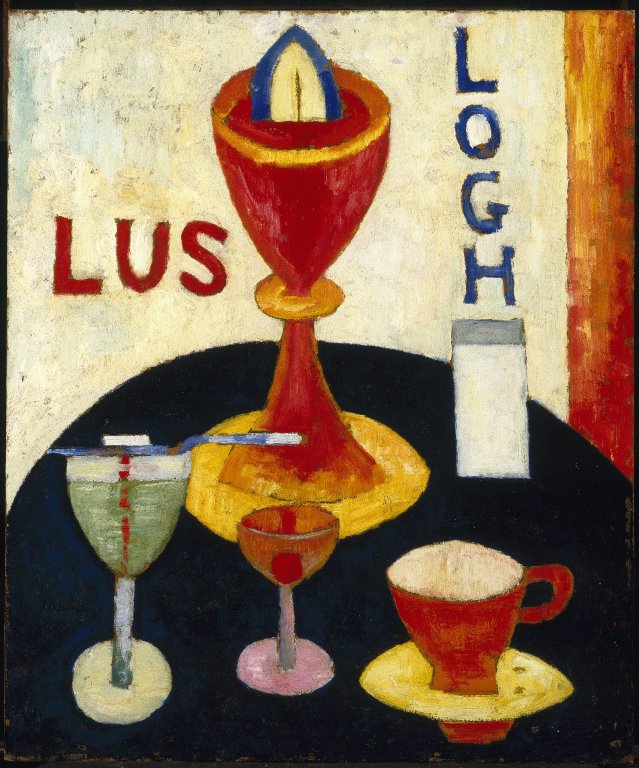5 American Impressionists You Need to Know
Impressionism is an art movement that originated in France in the 19th century. Artists associated with this movement are known for their dream-like...
Ruxi Rusu 4 December 2024
Marsden Hartley was a ground-breaking modernist, ostracized from the art world at the height of his career. Today he remains sidelined as a regionalist painter but his work deserves a second look.

Alfred Stieglitz, Marsden Hartley, 1916, gelatin silver print, The Metropolitan Museum of Art, New York, USA.
Marsden Hartley was born in Lewiston, Maine, on January 4, 1877. His parents were English immigrants who worked in a textile mill. Growing up in a boarding house, Hartley was one of seven children and the only son to survive to adulthood. At 15 he left school to work in a shoe factory before moving to live with family in Cleveland.

Marsden Hartley, Handsome Drinks, 1916, Brooklyn Museum, New York, USA.
He began taking lessons with the painter John Semon, then enrolled at the Cleveland School of Art, where he won a scholarship to study in New York. At the same time, Hartley was introduced to Transcendentalism through the writing of Ralph Waldo Emerson, which deeply transformed his artistic ambitions.

Marsden Hartley, Untitled (Maine Landscape), 1910, The Metropolitan Museum of Art, New York, USA.
In 1899 Hartley moved to New York. He studied with William Merritt Chase, befriended Albert Pinkham Ryder, and was noticed by Alfred Stieglitz. By 1909 he had his first solo show at Stieglitz’s 291 gallery. Living in New York introduced Hartley to European Modernism through the works of Kandinsky and Cézanne, who would become some of Hartley’s primary influences. Hartley returned to Maine each summer. The landscape, colors, and people of Maine remained elemental to Hartley’s visual vocabulary as he matured artistically.

Marsden Hartley, New Mexico, 1916-1922, Brooklyn Museum, New York, USA.
After more than a decade in New York, Hartley traveled to Paris in 1912. He visited Gertrude Stein’s salon, mingling with Pablo Picasso and Robert Delaunay. After getting tired of France, Hartley went to Berlin where he met Franz Marc and Wassily Kandinsky. His work changed under the influence of the German Expressionist movement while still retaining its source material and thematic content: Maine landscapes and Transcendentalist spirituality.

Marsden Hartley, Church at Head Tide #2, 1938-1940, Minneapolis Institute of Arts, Minneapolis, USA.
At the outbreak of World War I, Hartley remained in Germany and his work was soon marked by imagery of the German military. Karl von Freyburg, a Prussian lieutenant with whom Hartley had a close friendship, began to appear in his paintings. It is widely thought that the two men were lovers.

Marsden Hartley, Portrait of a German Officer, 1914, The Metropolitan Museum of Art, New York, USA.
When Freyburg died in the war, Marsden Hartley painted Portrait of a German Officer. Today the work is seen as one of the first examples of queer desire in modern art. A memorial and a love letter, the painting, and Hartley himself were widely renounced in American art circles after the war as being sympathetic to the German cause. While Hartley had already taken a liking to Europe, this dismissal increased his desire to separate himself entirely from the American art scene.

Marsden Hartley, Lobster Fishermen, 1940-1941, The Metropolitan Museum of Art, New York, USA.
Between the wars, Hartley returned to America and then moved back to Europe as soon as he had enough money to do so. He stayed there for about a decade before returning to Maine in 1937. Hartley refined his artistic style in the final decades of his life working in Maine. Inspired by Cézanne’s beloved Mont Sainte-Victoire, Hartley began to obsessively paint the tallest mountain in Maine, Katahdin.

Paul Cézanne, Mont Sainte-Victoire, 1885-1895, Barnes Foundation, Philadelphia, USA.

Marsden Hartley, Mt. Katahdin (Maine), Autumn #2, 1939-1940, The Metropolitan Museum of Art, New York, USA.
Many of his late Maine works included more obvious references to homosexuality, such as his attentively drawn, muscular lobstermen and lumberjacks.

Marsden Hartley, Madawaska—Acadian Light-Heavy, 1940, Art Institute of Chicago, Chicago, USA.
Marsden Hartley died in 1943 in Ellsworth Maine, leaving behind him a confounding legacy that is still being pieced together by art historians today.

Marsden Hartley, Summer, Sea, Window, Red Curtain, 1942, Addison Gallery of American Art, Andover, USA.
Cassidy, Donna M., et al. Marsden Hartley’s Maine: Exhibition, Metropolitan Museum of Art, New York, March 15 – June 18, 2017, Colby College Museum of Art, Waterville, Maine, July 8 – November 12, 2017. Metropolitan Museum of Art, 2017.
DailyArt Magazine needs your support. Every contribution, however big or small, is very valuable for our future. Thanks to it, we will be able to sustain and grow the Magazine. Thank you for your help!